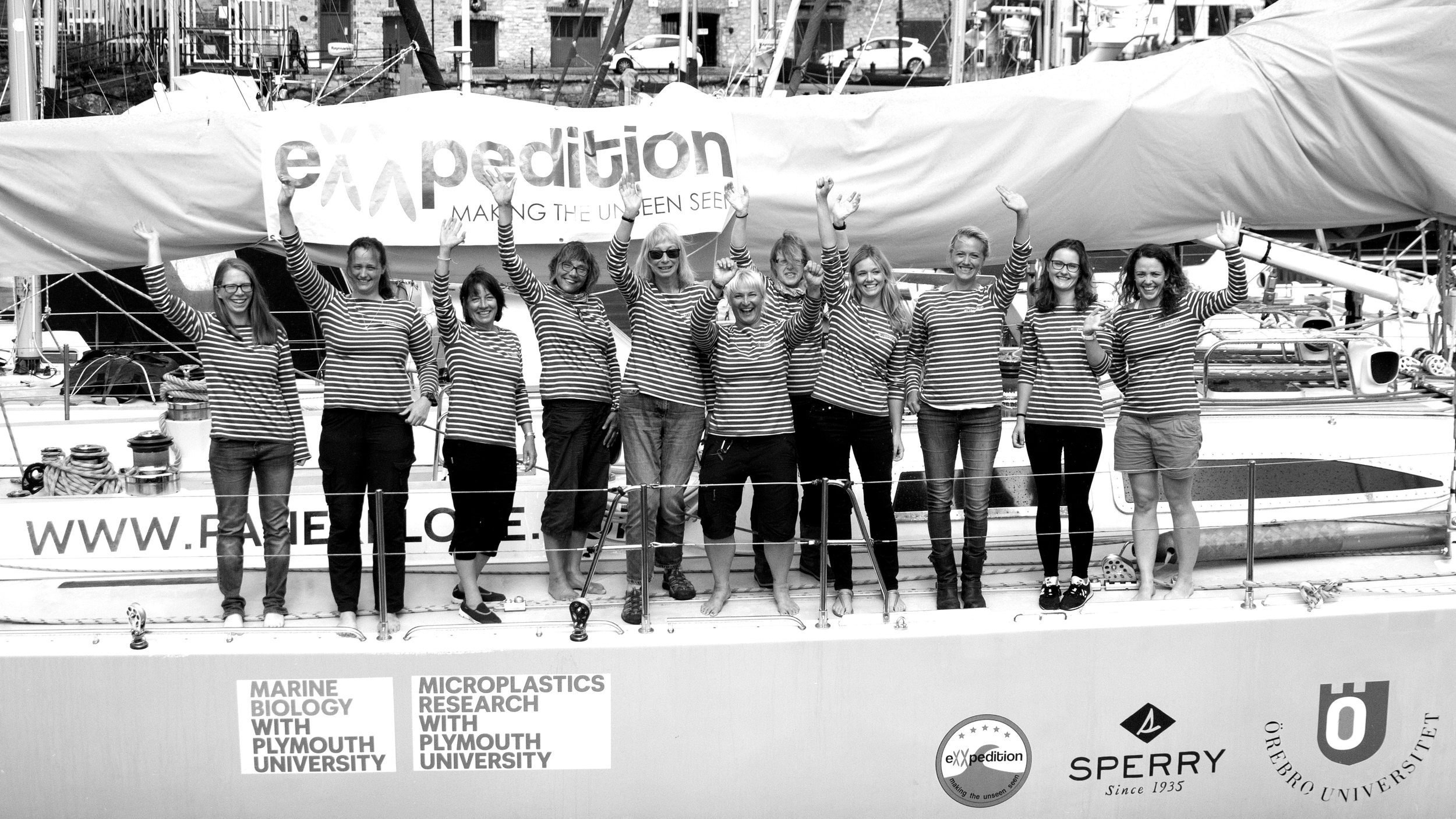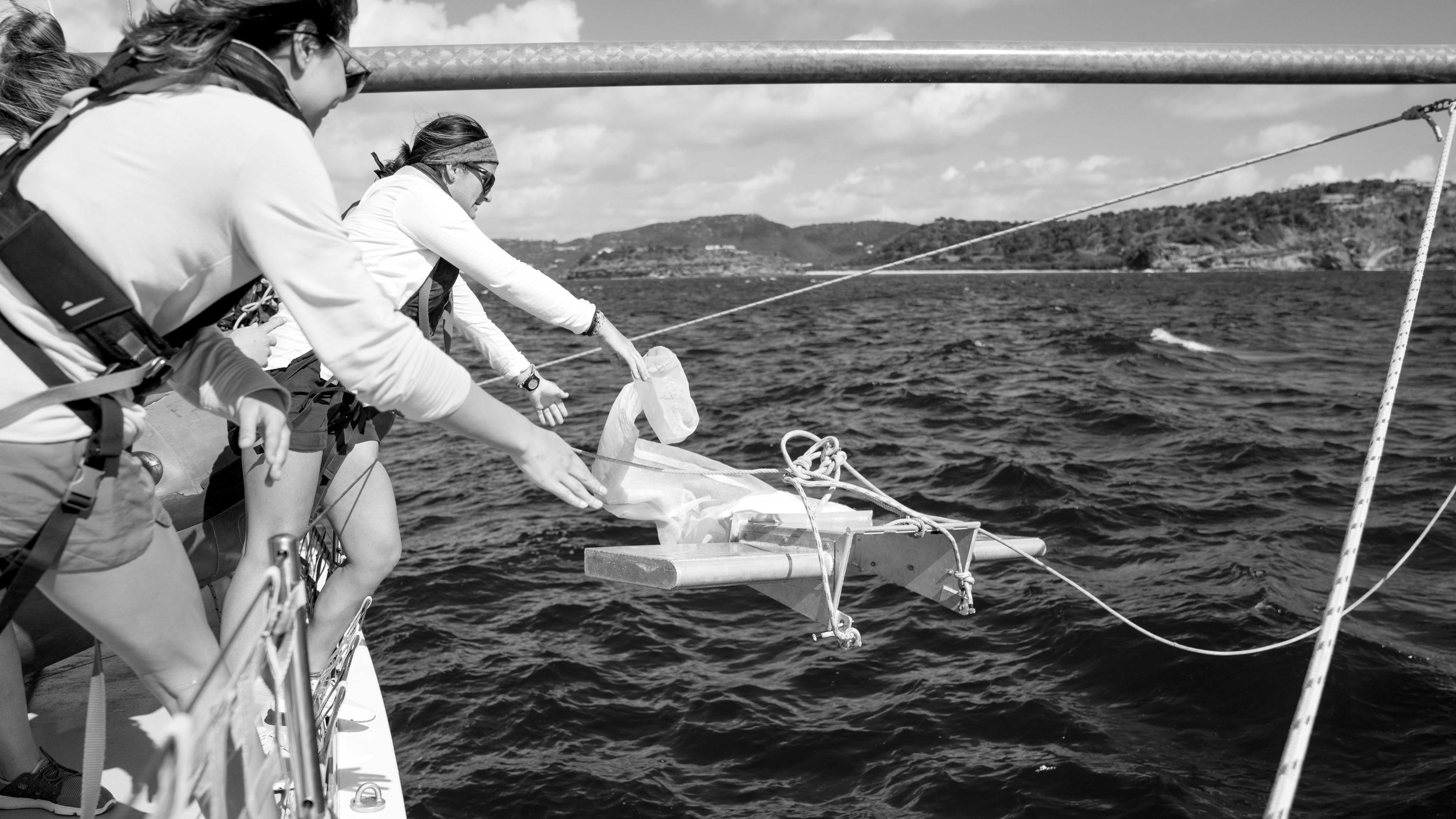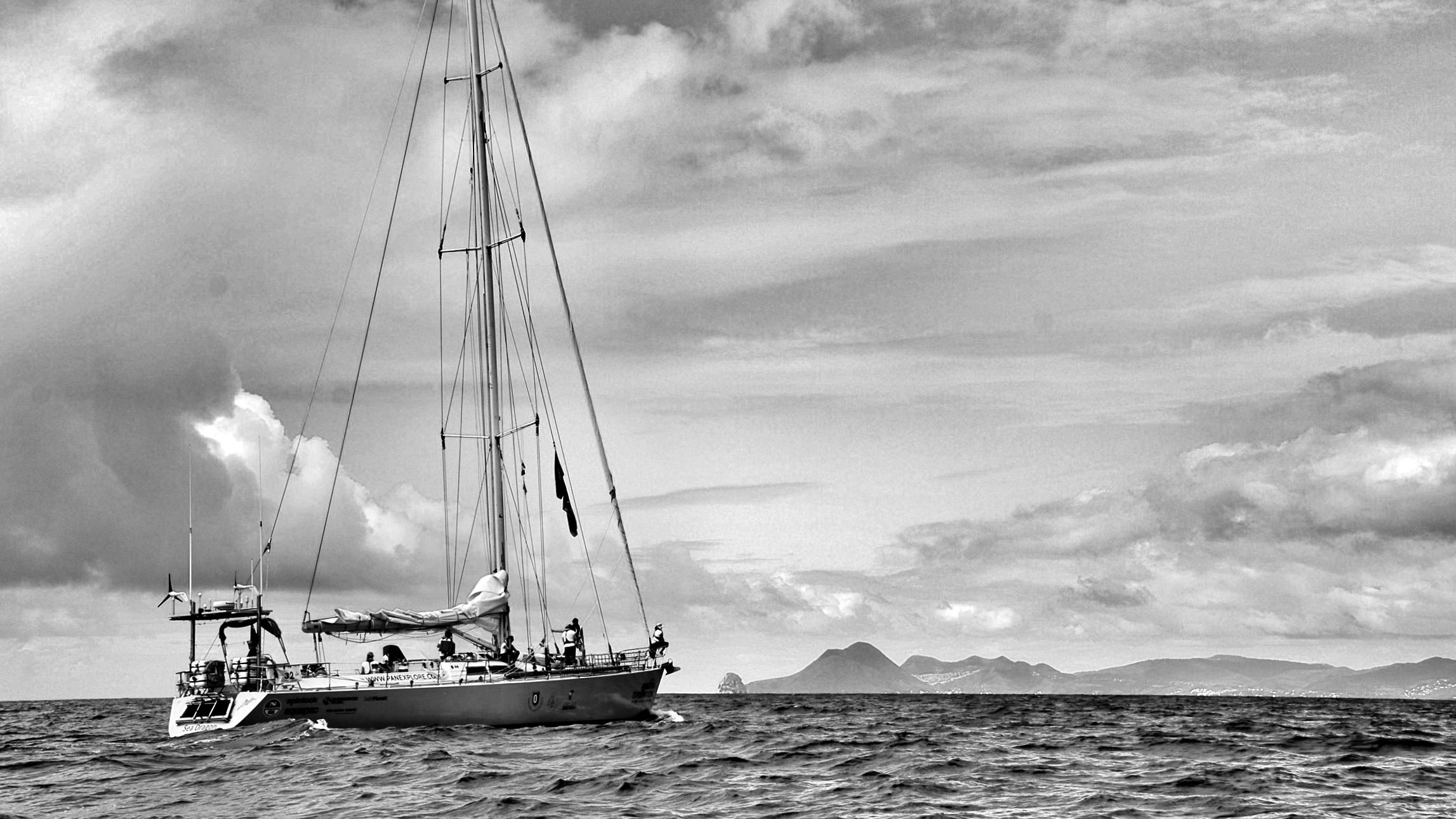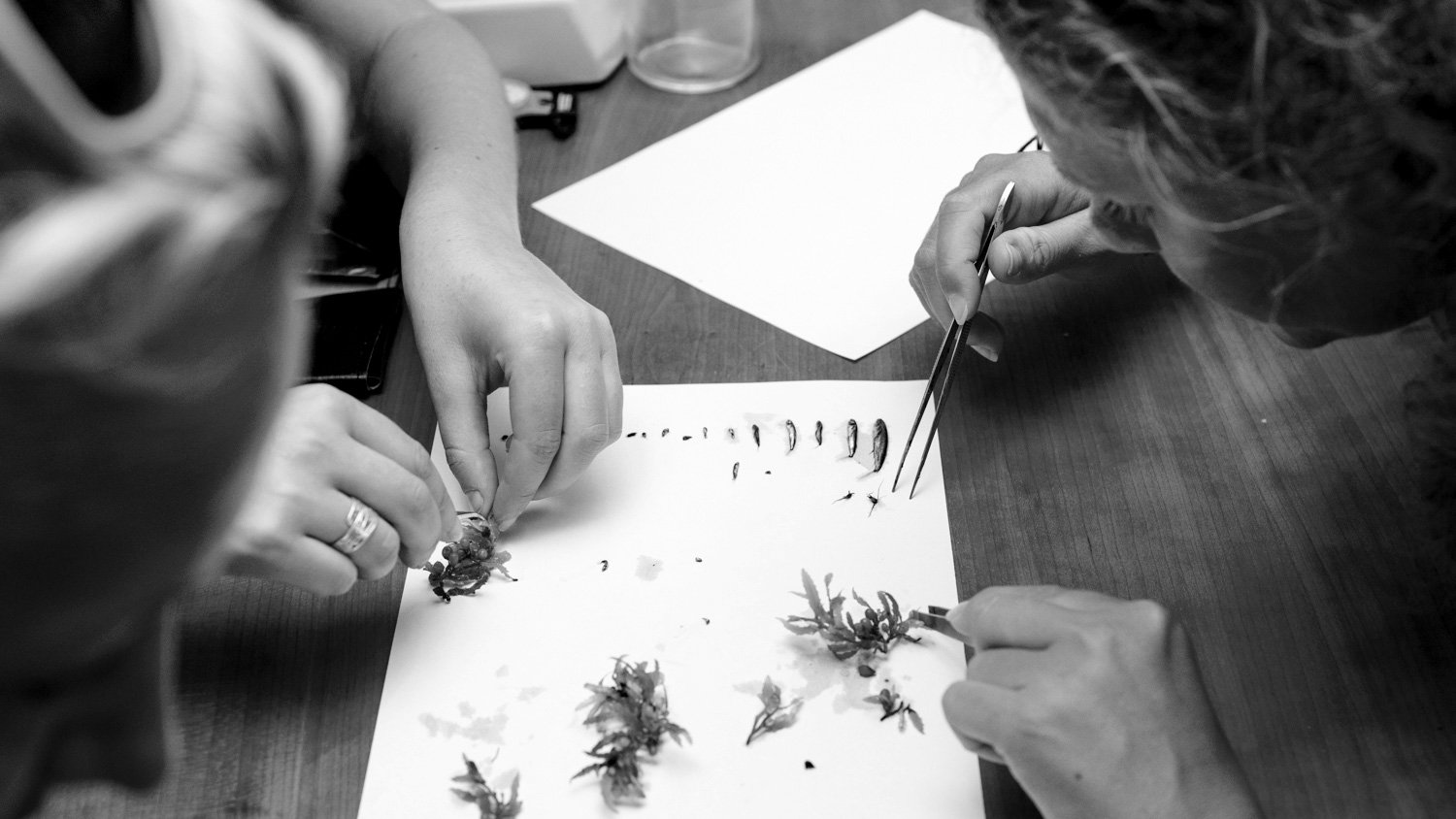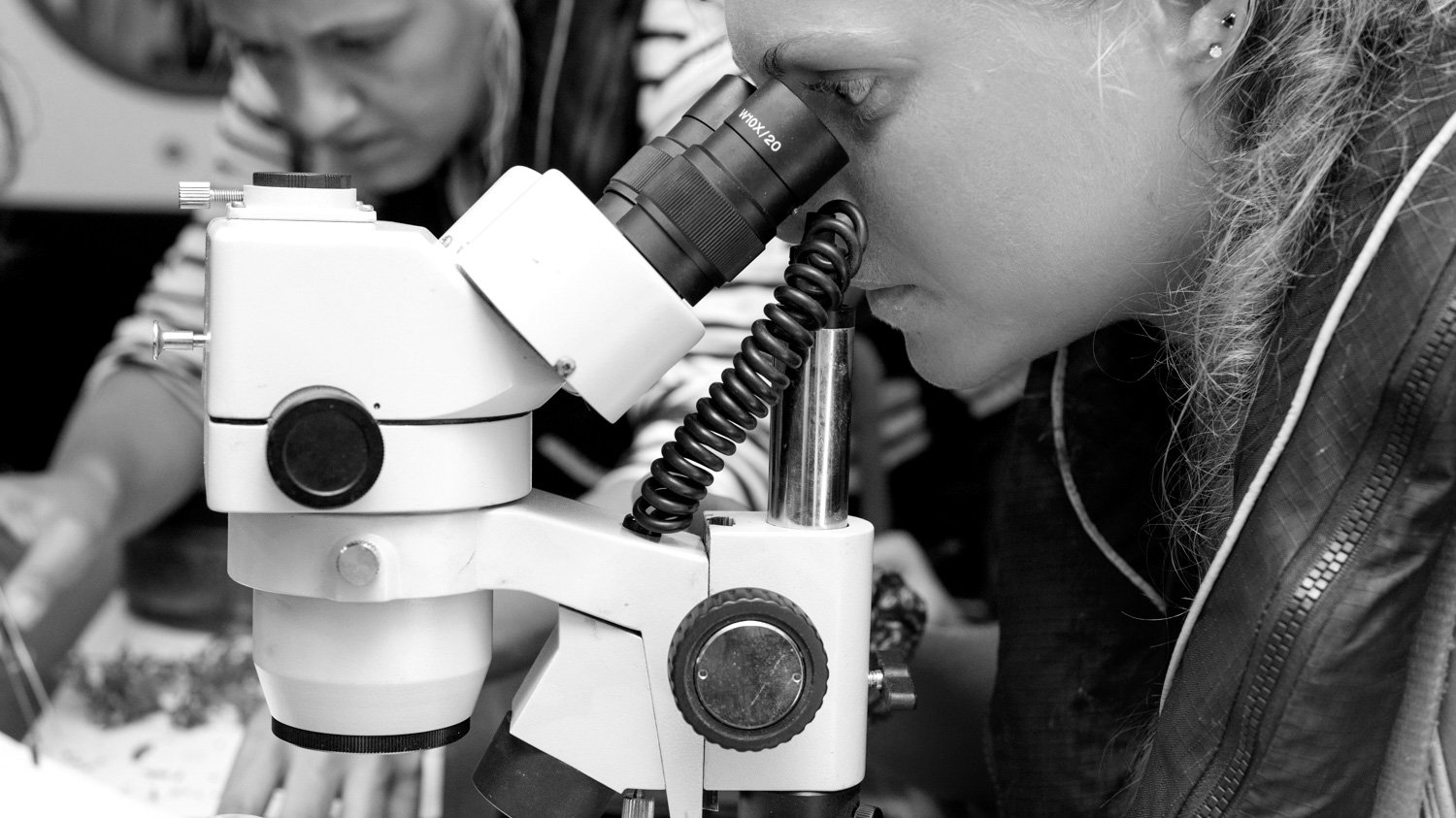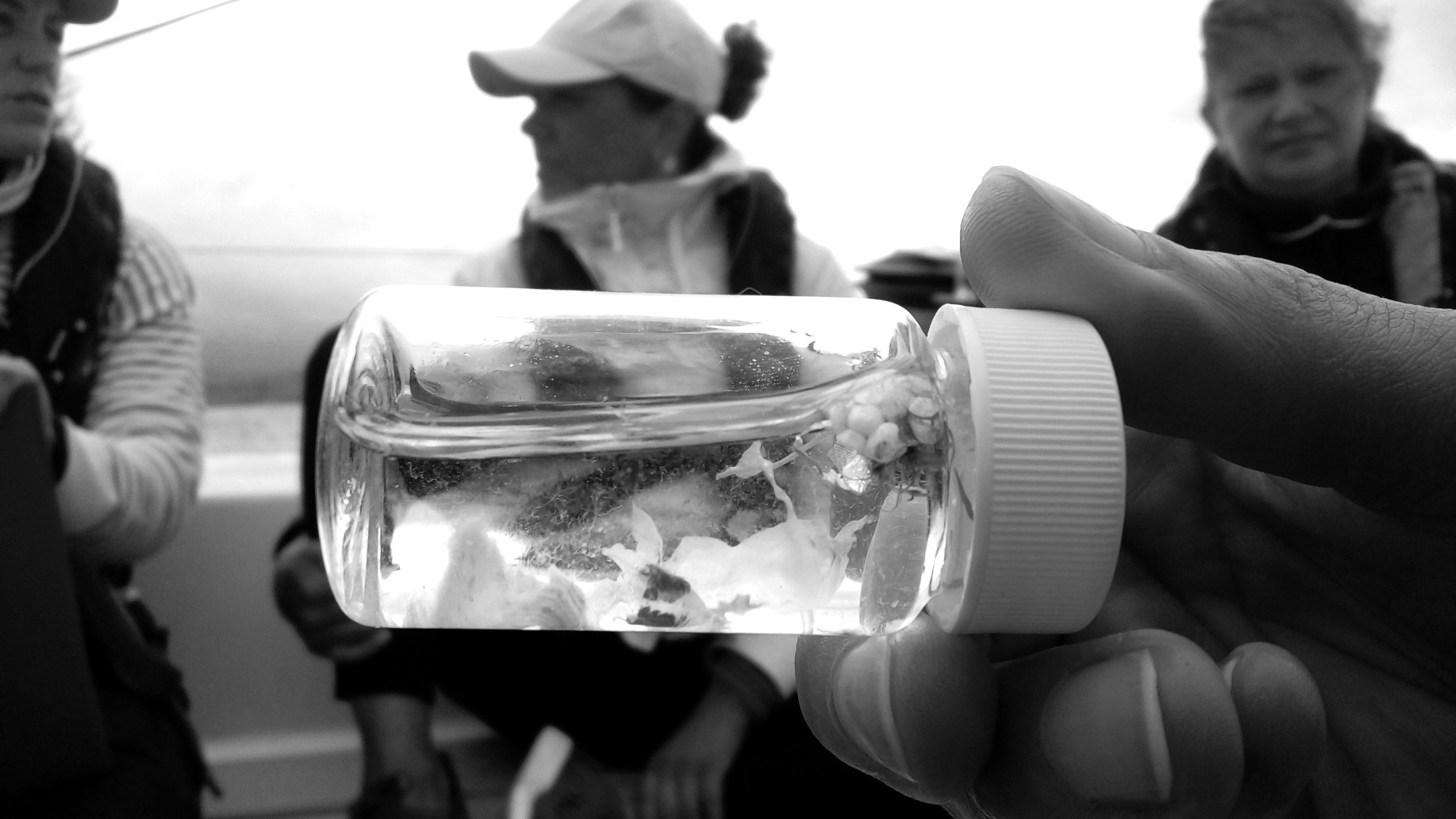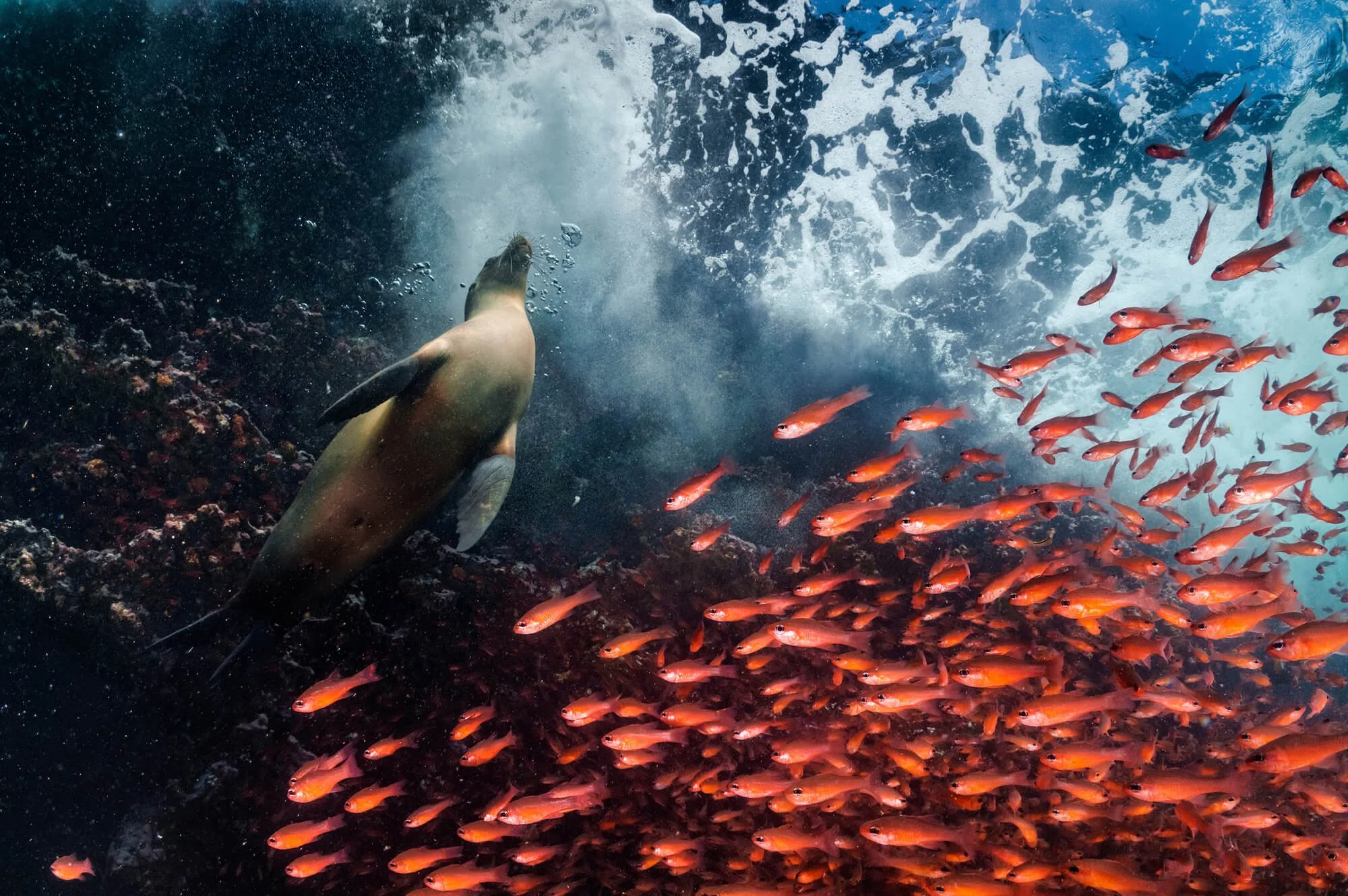AWAY: ROUND BRITAIN WITH EMILY PENN
How do you fight an invisible threat? The leader of an all-women microplastic research expedition shares her learnings.
Some of the biggest threats to our planet are invisible to the naked eye. It takes science to expose, intercept, and ultimately end microplastic pollution. To act on the problem, all you need is common sense.
On a trip through the Pacific Ocean from the U.K. to Australia, Parley Collaborator Emily Penn realized just how desperately the oceans need our help. This trip was a catalyst for Penn. She went on to participate in cleanup projects around the South Pacific, then on to co-founding Pangaea Exploration, an organization that runs a 72-foot sailing yacht, Sea Dragon, to explore remote parts of our planet. The purpose of these expeditions is to help scientists, journalists, educators, industry leaders and policymakers better understand and access our oceans— a goal she also brings to the Parley movement. Penn has spent most of the past decade studying marine plastic pollution, which inspired the eXXpedition series. The most recent, Round Britain 2017, consisted of a three-part journey with an all-female crew that set sail from Plymouth and circumnavigated the U.K. collecting data on microplastics.
Round Britain focused on the science behind marine plastic pollution and potential solutions, with a dedicated emphasis on public engagement and awareness. For Penn, it was also significant to bring her findings to her home country after nearly a decade at sea. Round Britain was about gaining and exchanging information; Penn and her team helped to educate those they came in contact with as they continued to learn more about the state of our oceans.
“It’s not about waiting for more papers to be published to tell us what’s wrong, but more about thinking ‘okay, we know there’s a problem, let’s act.”
Emily Penn
Why is it so important to make the unseen seen?
Making the unseen seen is about the fact that we often think so many of these environmental challenges will be obvious to us. The plastic pollution that we study is so small that you can’t see it when you look at the ocean, but it is there when you take a fine net through the water. So making the unseen seen is all about trying to shed light on some of these invisible environmental challenges we’re facing.
When you set out on this most recent one, the Round Britain trip, you were looking specifically for microplastics and other pollutants. Did you find what you expected, or were you shocked by how little or how much more there was?
We found a surprisingly high amount of plastic. The general correlation we found is that the higher populated areas, like London, have more plastic. It’s pretty clear this plastic is coming from us; it’s coming down rivers, down waterways and into our sea around Britain.
There’s a discrepancy between the staggering amount of plastic entering the ocean from land and the actual amount that we’re finding on the surface of the ocean, which is a tiny fraction of what’s going in. The question we need to answer is: where is the rest of that plastic going?
One theory is that it could be sinking, so we started taking sediment samples to see what is ending up on the seabed. A second theory is that it’s being ingested by marine animals, something that’s quite hard to measure, but we made a start by analyzing mussels all around the U.K. A third theory is that the plastic is simply passing through our nets. In the past we have sampled down to 333 microns; if the plastic’s smaller than that, it’s going to pass through. So now we’ve also been sampling water down to five microns to see what we’re finding at that very microscopic level.
How is having all women crews different from other expeditions?
I didn’t really think at the beginning that there might be a different dynamic, but there was. It’s been amazing. So has the reception we’ve had, and part of that reception has been because the crews have all been these incredible, powerful women who stand up for what they believe in. There’s something about the dynamic when it’s just women, the way people let their guard down a little bit more, in a good way. Particularly on this voyage there were days when basically everybody onboard was vomiting over the side because of the rough weather. When people get through that kind of experience on a trip, they form bonds they don’t form anywhere else. I think with women, that happens in an intense way.
On this recent expedition a big aspect was talking to people along the way. What’s the importance of communication on these missions?
We need to understand the problem and collecting data is a really good way of doing that. We also need to be able to monitor how the problem’s changing and so ongoing science is key. I personally am at the point where I don’t need any more science to make a change and I think a lot of other people are at the same point. It’s not about waiting for more papers to be published to tell us what’s wrong, but more about thinking “okay, we know there’s a problem, let’s act.” That’s why a huge focus of our program was about action.
We had a lot of outreach events focused on a couple of different audiences. One was working with politicians on the challenges they face in changing legislation to try to eliminate the unnecessary use of single-use plastic in a variety of ways. We also work with the general public, like schools and business owners on the things they can do, because ultimately we all contribute to this problem. Getting people to make very simple everyday choices is a big part of that. There are multiple layers with what we’ve been trying to do with Round Britain.
From talking to people on these eXXpeditions and through Parley Talks and Oceans School programs, what have you found gets people really motivated to start making changes and helping our oceans?
I think it’s different depending on the person and how each person thinks. A lot of people respond well to distressing imagery, because it plays on our heartstrings. For example, an albatross with a stomach full of plastic, or a turtle with a straw up its nose. For a lot of people, that’s a huge motivation to change that behavior.
Other people are more motivated by logic. When people start to come to grips with the concept that plastic is a material that’s designed to last forever and we use it to make things that have been designed to be used once and then be thrown away, logic kicks in and they say, “wow, this is really not a smart way to design products and that’s a challenge for us to face.”
Microplastics, Macro Problems
In 159 tap water samples across dozens of nations, 83% of those samples were found to have plastic microfibers. The numbers are even more alarming for the United States, with a contamination rate of 94%, the highest out of all tested. Europe’s samples were found to have the lowest contamination rates, which still came in at 72%.
The pervasive plastic pollution issue plaguing our waterways has negative side effects on fish. Studies show that, not only do microplastics tend to stay in the bodies of fish, they also affect the eating habits of fish and their tendency to explore their environment is diminished. Scientists theorize that these behavioral changes are due to brain damage caused by microplastics.
Human health is also affected by the plastics and toxics that we’re exposed to. Last year Penn tested her blood for chemicals banned by the United Nations; out of 35 chemicals, Penn’s blood contained 29.
These chemicals and contamination rates are concerning, especially in terms of women’s health. Penn’s female crews explored toxic pollutants such as pesticides, flame retardants, and fluorinated compounds, which adhere to the surface of plastic pollution. Many of these are endocrine disruptors, which mimic hormones that can impact women’s pregnancies and be passed on to offspring through childbirth and breastfeeding.
Learn more about past and upcoming eXXpeditions:
Round Britain 2017 | North Pacific 2018
#ParleyAIR #GreetingsFromAway
READ MORE





